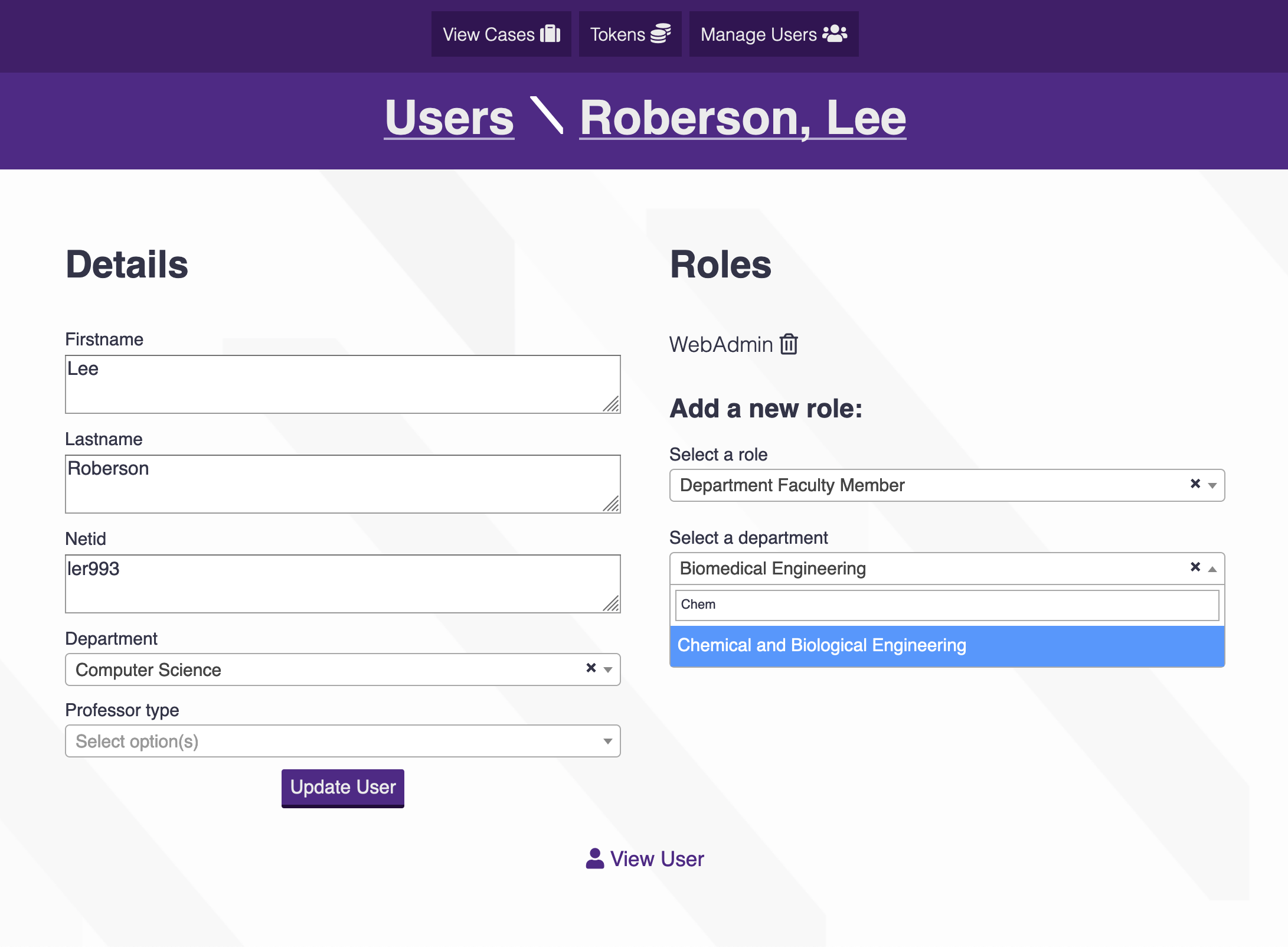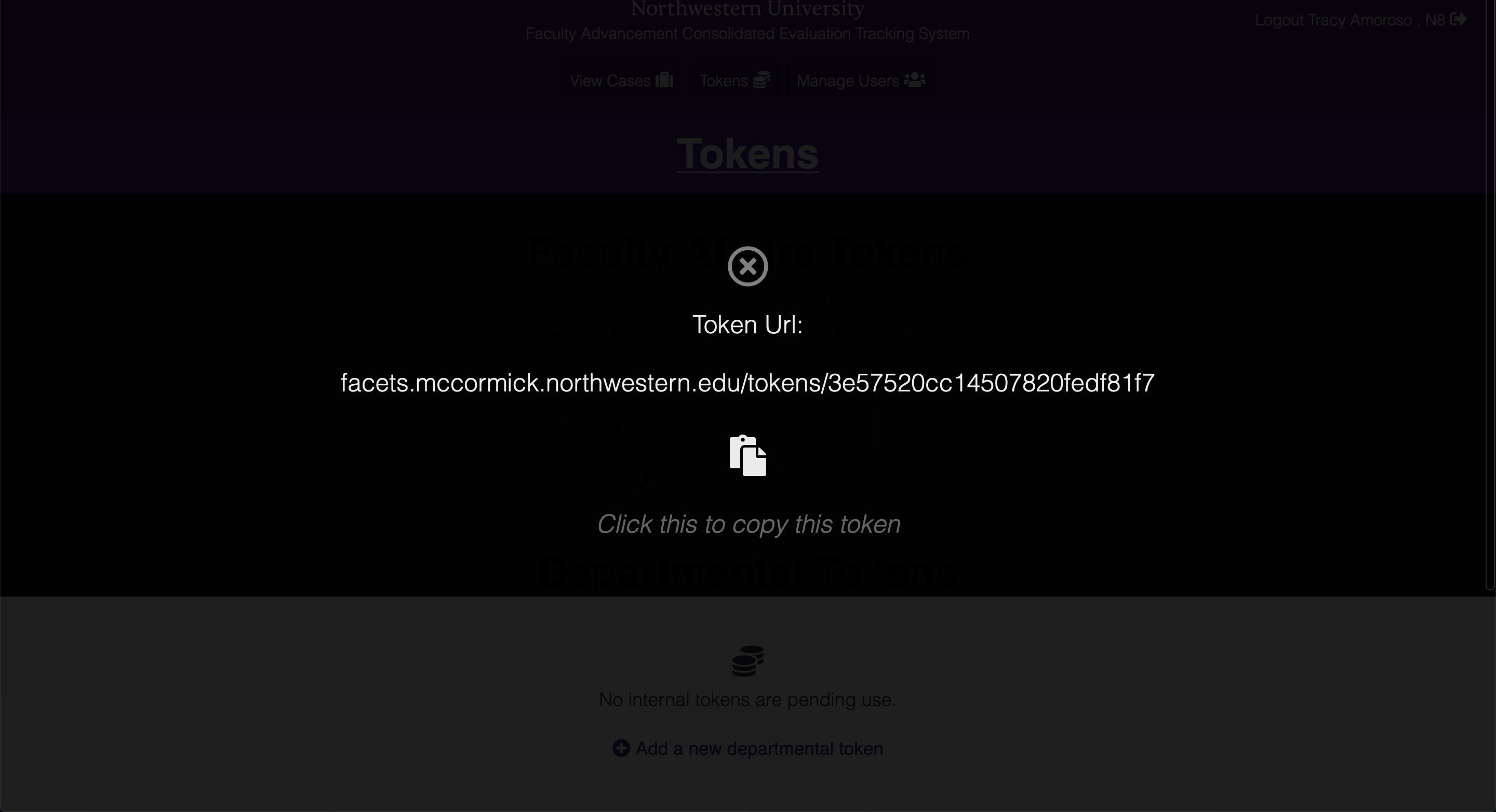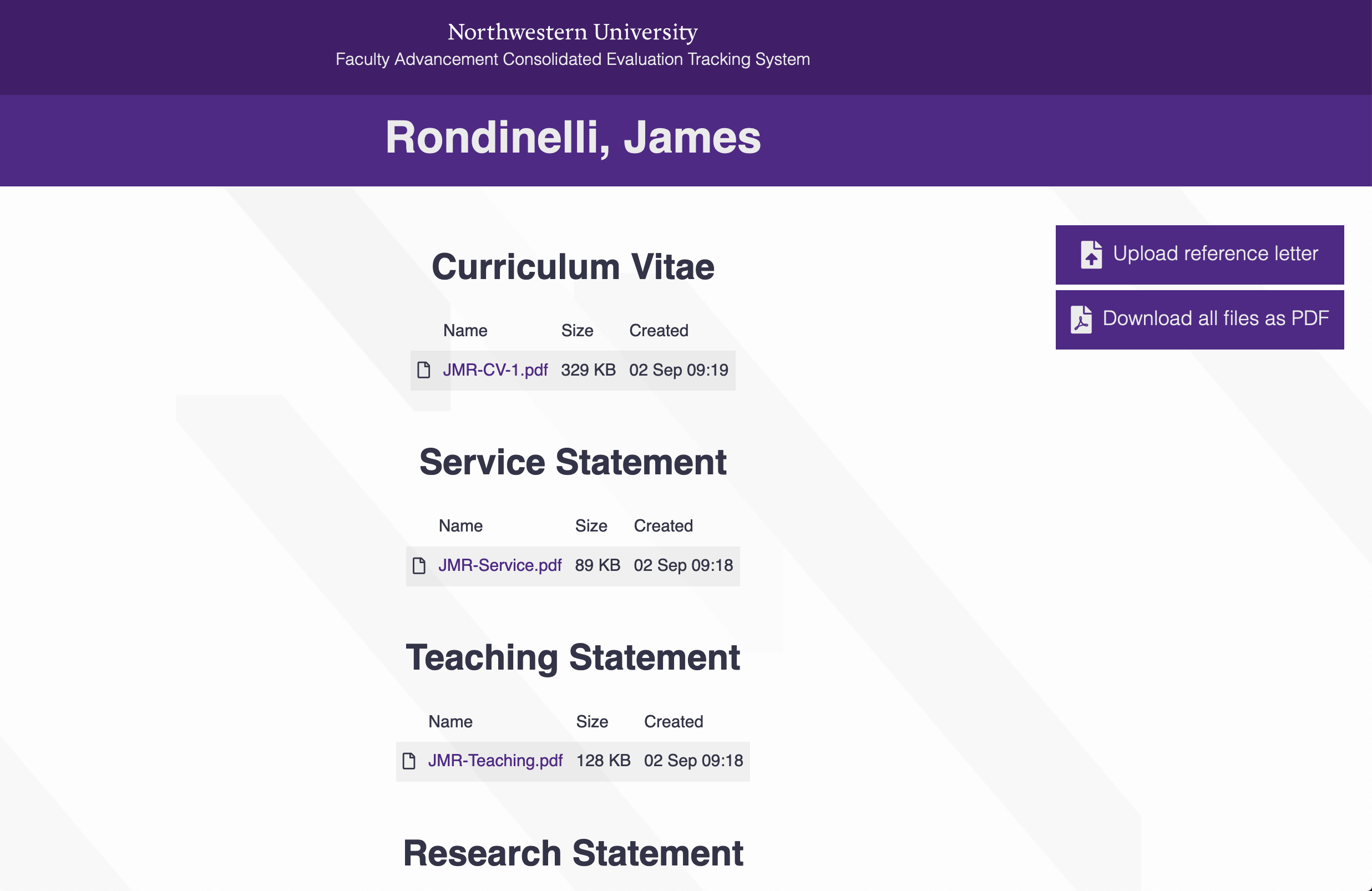Purpose
FACETS is a tool I built at Northwestern University to track professors through the tenure process. The tool gets used by the administration, faculty, and professors at other universities to compile all the information needed to discuss a tenure case.
Unfortunately this system is only accessible to professor @ Northwestern so you likely cannot see the live site. There are many screenshots below.
Tech
FACETS is essentially a file storage system that provisions access on the fly based on human resources data. The system parses those apis responses to determine:
- Are they a professor?
- What kind? Full, assistant, instruction?
- Whose cases can they view?
- Which documents in those cases?
FAECTS also allows for custom roles to be added to users like Department Administrator, Dean, Provost, etc. which all allow different levels of access for unique roles.
The other complexity the system handles is allowing people who do not have access to a Northwestern University single-sign-on account (netid) to access the system to upload their reference letters (about faculty up for tenure). To handle these unauthenticatable users I added the ability for facets to generate a secure one time use token that can be emailed, allowing these external users to upload a single document into the case. The tokens look something like this facets.mccormick.northwestern.edu/tokens/35783cf2672835428f8c08f88c9f7da3b024d292.
The most useful features for the end users are,
- PDF merge of entire case or selected docs (MANY people merge the case into one pdf and print it)
- ZIP of selected documents
- Auto file naming (previously the department administrators renamed all files by hand to match a convention)
- Drag and drop file upload (dropzone.js -> rails endpoint)
Here’s a few of those features
-
Index of current cases

-
A particular case and its subfolders, notice the PDF and ZIP buttons

-
Drag and drop document upload within a folder

-
Editing a user with custom roles

-
Creating a token (this is something an admin would do), they then click the copy icon and email the token.

-
Using a token (limited system access for external people)
